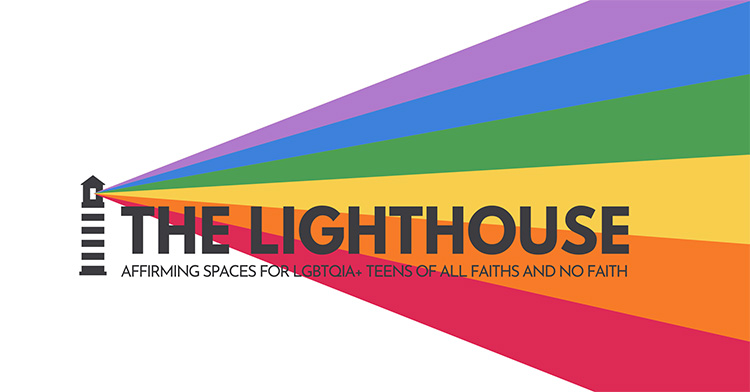Twenty-six teenagers dillydally on smartphones, sending instant messages, scrolling through news feeds, liking statuses and posting updates on social media sites Twitter, Facebook and Instagram while intermittently gazing at farmland images beaming from a digital projector. New Age tunes echo through the room courtesy of online music service Spotify.
Despite the tech-rich environment, these youths aren’t meeting at an urban cybercafe or taking a class at an Apple store. They are congregating at the Upper Dublin Lutheran Church fellowship hall in the Rev. Keith Anderson’s weekly catechism class. The day’s focus is on the third commandment: Remember the Sabbath day and keep it holy.
But Anderson sees no irony in allowing his students to noodle around online as part of a discussion on God’s rules of rest. Indeed, this is their Sabbath.
“When we were planning this class, we debated whether or not we would let them use their smartphones during the 20-minute in-class Sabbath time,” said Anderson, the 39-year-old pastor of Upper Dublin Lutheran, a 1,000-member church family in Ambler, Penn.
“And then we decided, yes we should. This is how they relax. This is what they would do to relax. This is how they experience Sabbath,” he said.
 Over the last five years, Anderson has built a national reputation in Christian circles as a social media expert -- especially as the technology relates to teens and tweens. He is best-known for the 192-page paperback “Click 2 Save: The Digital Ministry Bible,” which he co-wrote with Elizabeth Drescher, a professor of religious studies at Santa Clara University.
Over the last five years, Anderson has built a national reputation in Christian circles as a social media expert -- especially as the technology relates to teens and tweens. He is best-known for the 192-page paperback “Click 2 Save: The Digital Ministry Bible,” which he co-wrote with Elizabeth Drescher, a professor of religious studies at Santa Clara University.
More than a gimmick to spark the teens’ interest, Anderson says, social media can be used as a tool to convey the ancient teachings of the church in the formation of a new generation of Christians. It can help break down barriers, reach across fractures in teens’ lives and engage teens in the spaces -- digital or otherwise -- where they live.
“How do we equip them to take care of themselves in this space, and be people of faith, if we aren’t in this space?” he said.
In his own church, he is incorporating technology and social media into the everyday life of faith, including youth formation. It’s more than just letting the students text during breaks; as part of the class’s fall Ten Commandments project, Anderson asked his students to Instagram pictures of their ideal forms of Sabbath. They’ve discussed Christlike behavior on the Internet, and what it means to be a “digital disciple.”
“We are all inspired by what we see online in our faith community,” said 18-year-old Will Thornton. “It’s another way for us to learn and connect with other people in our faith, whether we are having good days or bad days.”
God in the Twitterverse
Anderson’s social media philosophy is simple: God is everywhere, even in the Twitterverse. And if the church fails to embrace that, it stands to lose its future members.
“We remember a time before email, before there was social media,” said Anderson, pointing out that even email is an outdated form of communication for today’s teens. “These kids will never know that time.”
“[Social media] isn’t just a tool you can use in formation, like the way we used a slide show in the 1960s and ’70s,” said Drescher, Anderson’s co-author. Drescher, an Episcopal scholar, also wrote “Tweet If You Heart Jesus: Practicing Church in the Digital Reformation.”
“The church is slowly starting to acknowledge that social media is the landscape of communication,” Drescher said. “This is the medium where spiritual growth is happening, so we have to be working in that medium.”
Drescher points to the New York-based liturgical organization Digital Formation as an example of embracing social media for formation. The educational group seeks to help clergy and laypeople in the Episcopal Church use social media through webinars and Twitter.
These organizations “are drawing on the most positive potential of the new media landscape,” Drescher said.
Last fall, Drescher asked students in her Christian tradition course to post images of ideas, themes and people relevant to the history of Christianity on the social media site Pinterest. There are more than 1,000 pins on the resulting “Seeing the Christian Tradition” Pinterest board, ranging from depictions of John the Baptist baptizing Jesus to photographs of Nelson Mandela.
Like Anderson, Drescher sees a parallel with an older form of church teaching.
“Pinterest is a modern-day stained-glass window,” Drescher explained. But unlike the stained-glass windows in a given church, which are accessible only to the people in that region, Pinterest boards are accessible from any computer with Internet access.
Formation for digital natives
A Gen Xer, Anderson dresses in fitted jeans, a cardigan and black-rimmed Buddy Holly-style glasses.
His workspace reflects the merging of old and new. In the church’s front office, white-haired parishioners staple programs. Some are on Facebook to keep up with the grandkids, but for the most part, they say it’s not really for them. On the bookcase in Anderson’s office are round-faced statues of Martin Luther and Luther’s wife, Katharina. On his desk is a silver MacBook Pro -- Twitter screen up and running. The iPhone 5 next to it buzzes every seven minutes or so.
“In some ways, I’m a cultural translator,” Anderson said. “I’m very much aware that I minister to people who are not online as well as people who are online a lot. Part of my role is to tell them that even though the technologies are different, [the people] aren’t that different.”
He was first introduced to Facebook in 2006, when he was assigned to the Lutheran Church of the Redeemer in Woburn, Mass. Anderson was a little apprehensive of new media but slowly realized how it helped him connect with his congregation.
“I would post things about my life and my runs, and people would ask me how my running is going,” Anderson said. “People really started interacting around the content that was shared. I thought, ‘This is amazing. I’m getting a window into people’s lives, and I get to communicate with them throughout the week.’
“It was slowly becoming a valuable thing, and people were just delighted by it.”
In 2008, the Church of the Redeemer held a retreat during which they decided to bolster communication with the congregation through social media -- then still in its infancy. Anderson began blogging his sermons and podcasting them as well. He also started filming a two-minute Bible series and posting it on YouTube.
“He had an incredible impact,” said Carolyn Rahal, the parish administrator at the Church of the Redeemer, who refers to Anderson as a “rock star.” “He was so innovative. During a time when our community was on lockdown because of robbers in the area, he tweeted prayers.”
In the fall of 2012, Anderson moved to Ambler with his wife, Jennifer, and four children, and his social media presence has continued to expand.
Last June, Anderson completed the 10-mile Tough Mudder Race in Philadelphia. Where did he post his accomplishment? On Facebook, of course. In December, he celebrated his 10-year anniversary as an ordained minister by posting a series of Instagram photos.
And each Sunday morning, Anderson asks congregants to check in on Facebook, telling the world they are at Sunday morning worship. He has also started a Theology Pub series, with Facebook and Twitter accounts and a blog called God on Tap.
“You can try to keep [teens] off Facebook for as long as you want, but this is the world they are living in. They are native to it,” Anderson said. “So instead of saying, ‘It’s the devil; stay away from it,’ I’m here to show them faith has a role in it. God has a role in everything.

Casts are something that I let myself treat as a God #udlc #casts

Have no other gods before me.#udlc


and keep it holy: This is where I find
peace in the midst of
busyness. #udlc



The Ten Commandments on Instagram
Last fall, Anderson co-taught an online class at the Lutheran Theological Seminary at Philadelphia called “Catechism as Platform: Teaching Catechism in the Digital Age,” which spurred him to think about using social media more in his formation classes with teens.
One day while researching Martin Luther’s 16th-century texts, he started examining the woodcuts used to teach the Lord’s Prayer, the Apostles’ Creed and the Ten Commandments. They reminded him of Instagram pictures of today. To help prepare his students for Confirmation, Anderson kicked off a Ten Commandments project. He started out teaching the mechanics of the medium: how to set up Instagram accounts and post pictures using smartphones. He asked parents to participate, too.
Each week, he discussed a different commandment and its practical application. For homework, he asked students to find and post images that helped them understand the commandment. For example, for the commandment to keep the Sabbath, participants posted pictures of piano keys, workplaces and a poppy field.
One of the most meaningful classes in the 10-week series, Anderson said, focused on the eighth commandment: Do not bear false witness against your neighbor.
“We talked about the girl in Florida who had been cyberbullied and committed suicide,” Anderson said, referring to 12-year-old Rebecca Sedwick, who committed suicide in September after more than a year of being harassed on Facebook.
“And they got it. I can see it in their eyes. They really got it in the modern-day context. … These are high stakes,” Anderson said.
Last fall, Anderson also offered his catechumens a two-day “digital disciples” class designed to get them to think about using the Internet as Jesus would. It’s important, Anderson says, that students are mindful of their status updates, likes and friend requests as they define their online identities.
“We engaged the whole class in thinking about these rules,” Anderson said. “How is this an example of Christlike behavior on the Internet?”
The class discussed “Gregory’s iPhone Contract,” a poignant letter that Cape Cod mother Janell Burley Hofmann wrote to her 13-year-old son, Gregory, last Christmas when she gave him an iPhone. Hofmann’s heartfelt 18 points of social media rules went viral.
On a recent Sunday morning after the 9 a.m. check-in, a group of teenagers met to talk about how technology has amplified their relationships with God. Nearly all of these students have smartphones, and even if they aren’t checking them, they are fiddling around in their purses and pockets checking for them. Social media is ensconced in their daily lives, like eating breakfast and taking the bus to school, so much so that not sharing their feelings in images and updates would be foreign -- even in their faith lives.
“We try to promote ourselves in positive ways,” said Naomi Krizner, 15, “like when we are doing service projects. It’s a way for our friends [who may not go to church with us] to see our involvement in the faith.”
And probably most importantly, students have learned that when used with kindness and compassion, social media can be a place where they are encouraged in Christ.
“Sometimes things happen during the week that are upsetting,” said 20-year-old Amanda Couch, who sometimes listens to Anderson’s sermons on YouTube. For the busy college student, it’s the only time she may have during the week. “But when I’m on social media and I see people’s positive messages, I remember God always has a reason.”
Questions to consider
Questions to consider:
- How have you witnessed a changing culture altering the way people practice traditional disciplines, like keeping Sabbath?
- How might technology, like Instagram, be a creative platform to invigorate or reinvigorate your ministry?
- What resources exist in your institution and beyond to help you utilize technology in new ways?
- In your own work and life, how is social media redefining community and connection? How are you responding to these changes?













